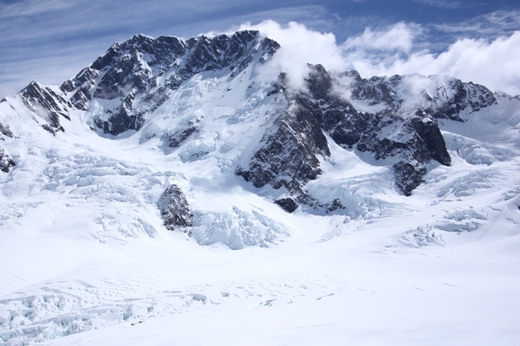McCullough Robertson senior associate, Trent Thorne, has made two trips to New Zealand to attempt to conquer Mt Cook. Here he tells Australasian Lawyer his story
With dry weather tightening its grip on rural Australia, last December McCullough Robertson agribusiness lawyer Trent Thorne travelled to New Zealand to climb Mount Cook in a bid to attract donations to purchase urgently-needed livestock fodder through the ‘Buy a Bale’ campaign.
Though Thorne's summit was ‘thwarted’ due to avalanche risk, the self-professed ‘agvocate’ managed to support producers struggling to keep pace with worsening drought conditions. Below, Thorne tells us about the endeavour in his own words...
"I travelled to New Zealand in December, 2013, to climb Mt Cook in a bid to attract donations of funds to purchase urgently needed livestock fodder through the ‘Buy a Bale’ campaign.
Conquering Mt Cook has been a long held personal challenge. Achieving the summit requires a degree of mountaineering skills and a high level of personal fitness. I had previously attempted to climb the mountain in December 2012, only to be frustrated by poor weather conditions that kept me in Mt Cook village during my allocated climbing window.
The weather gods again conspired to thwart my 2013 attempt. On the day I arrived, a metre of snow was dumped on the upper slopes of Mt Cook, which would prove to be a major problem. Also, the forecasts revealed that there would be only one viable climbing day in the six day climbing window, due to high winds.
The problem with climbing so close to a recent heavy snowfall was that there would potentially be insufficient time for the snow to slough off the upper slopes of the mountain i.e. the avalanche risk was high.
 The day prior to the allocated climbing day, my guide and I ventured part of the way up the Linda Glacier so that we could map a route through the crevasse field. This was an important step as the summit attempt started at 3am and we only had our head torches to guide the way.
Mountaineering of this nature normally involves just you and your guide and the pace is determined by the weakest link (i.e. me). The conditions, however, were such that all of the climbers that left Plateau Hut were unable to disentangle themselves from each other. The footing was not the normal ice crust that your crampons can bite into as the fresh snow was like walking in soft sand and it made the going particularly slow.
The ‘climbing group’ reached the Summit Rocks just as the sun was rising. The guides were concerned with certain features of the slope and an inspection of the snow pack revealed that it was highly unstable and prone to avalanche.
The decision was unanimously made at that point to abort the climb some 700 metres short of the summit. Whilst I was disappointed at the time, safety must always come first and the aim is to return to the hut in one piece.
The goal remains unfulfilled and the ambition still burns bright, but the question remains: does third time lucky equal the summit?"
The day prior to the allocated climbing day, my guide and I ventured part of the way up the Linda Glacier so that we could map a route through the crevasse field. This was an important step as the summit attempt started at 3am and we only had our head torches to guide the way.
Mountaineering of this nature normally involves just you and your guide and the pace is determined by the weakest link (i.e. me). The conditions, however, were such that all of the climbers that left Plateau Hut were unable to disentangle themselves from each other. The footing was not the normal ice crust that your crampons can bite into as the fresh snow was like walking in soft sand and it made the going particularly slow.
The ‘climbing group’ reached the Summit Rocks just as the sun was rising. The guides were concerned with certain features of the slope and an inspection of the snow pack revealed that it was highly unstable and prone to avalanche.
The decision was unanimously made at that point to abort the climb some 700 metres short of the summit. Whilst I was disappointed at the time, safety must always come first and the aim is to return to the hut in one piece.
The goal remains unfulfilled and the ambition still burns bright, but the question remains: does third time lucky equal the summit?"

